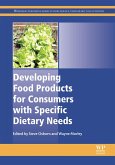Across multiple in-depth chapters, the book examines the full scope of modern food processing-from the basic principles of heat and mass transfer to the kinetics of food spoilage and the integration of smart technologies like AI and IoT. Readers are introduced to the classification of food processing techniques (mechanical, thermal, chemical, and biological), the structure and behavior of food materials under various processing conditions, and the interplay of nutritional quality, safety, shelf life, and consumer expectations.
Key concepts such as water activity, pH, rheology, and sensory attributes are explained in detail, linking them directly to practical applications such as drying, pasteurization, fermentation, packaging, and preservation strategies. The text also addresses the historical evolution of food processing, the role of regulation and safety standards (such as HACCP and Codex Alimentarius), and the current innovations driving sustainable and ethical food systems, including high-pressure processing, cold plasma, and precision fermentation.
Designed to serve as both a textbook and a professional reference, the book includes a detailed glossary of terms and is written with scientific clarity and educational intent. Whether you are an undergraduate student just beginning your studies in food technology or a seasoned food technologist seeking to update your knowledge on cutting-edge developments, this book offers valuable insights and practical guidance.
In a time when food systems must balance safety, efficiency, nutrition, sustainability, and innovation, The Science of Food Processing delivers a timely and essential resource for understanding how food is transformed from raw agricultural materials into the safe, nutritious, and desirable products we consume every day.
Dieser Download kann aus rechtlichen Gründen nur mit Rechnungsadresse in A, B, CY, CZ, D, DK, EW, E, FIN, F, GR, H, IRL, I, LT, L, LR, M, NL, PL, P, R, S, SLO, SK ausgeliefert werden.









